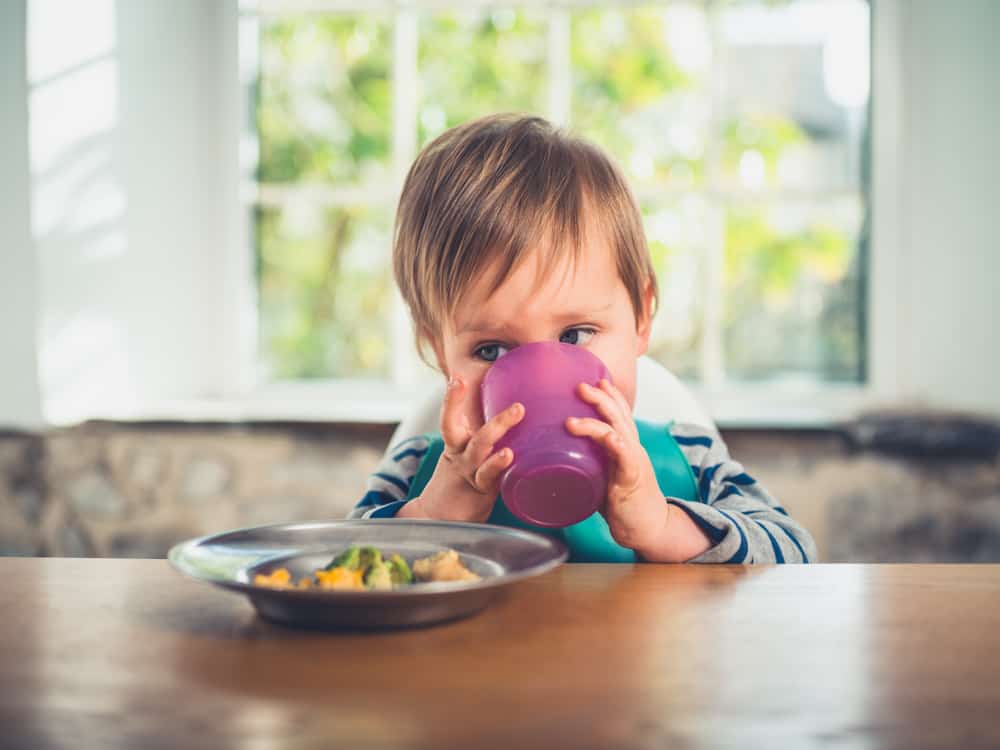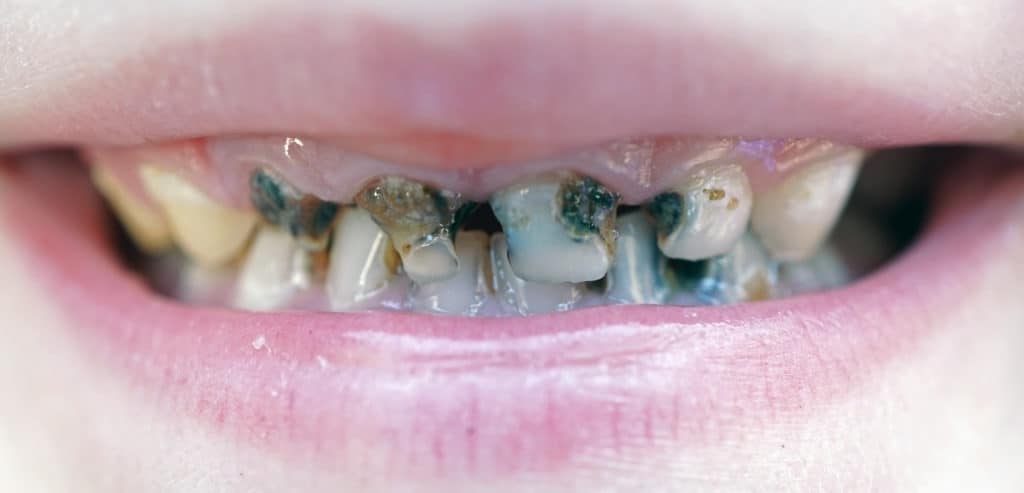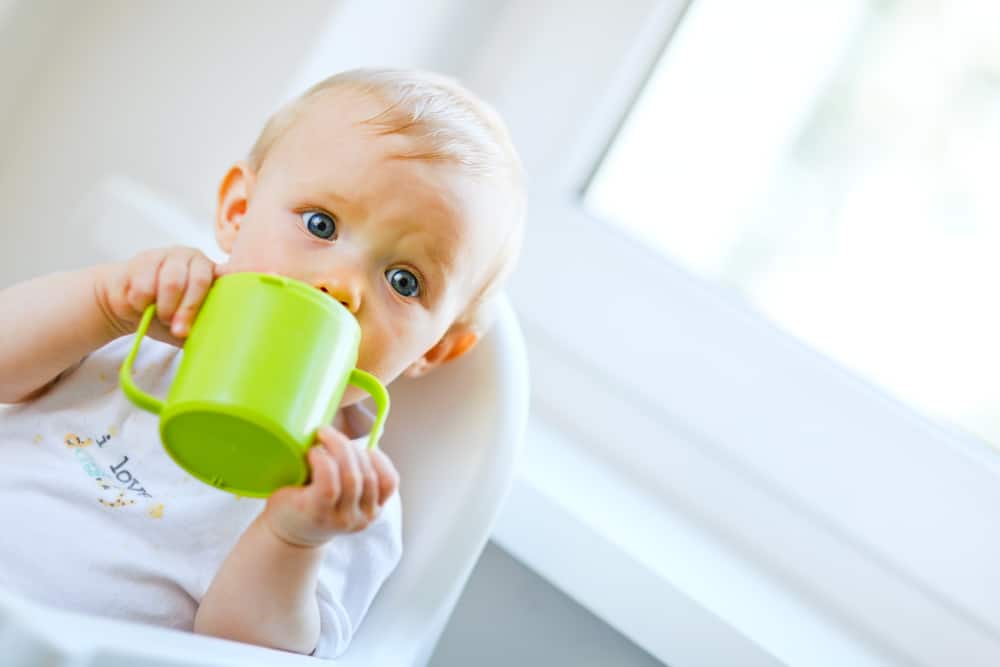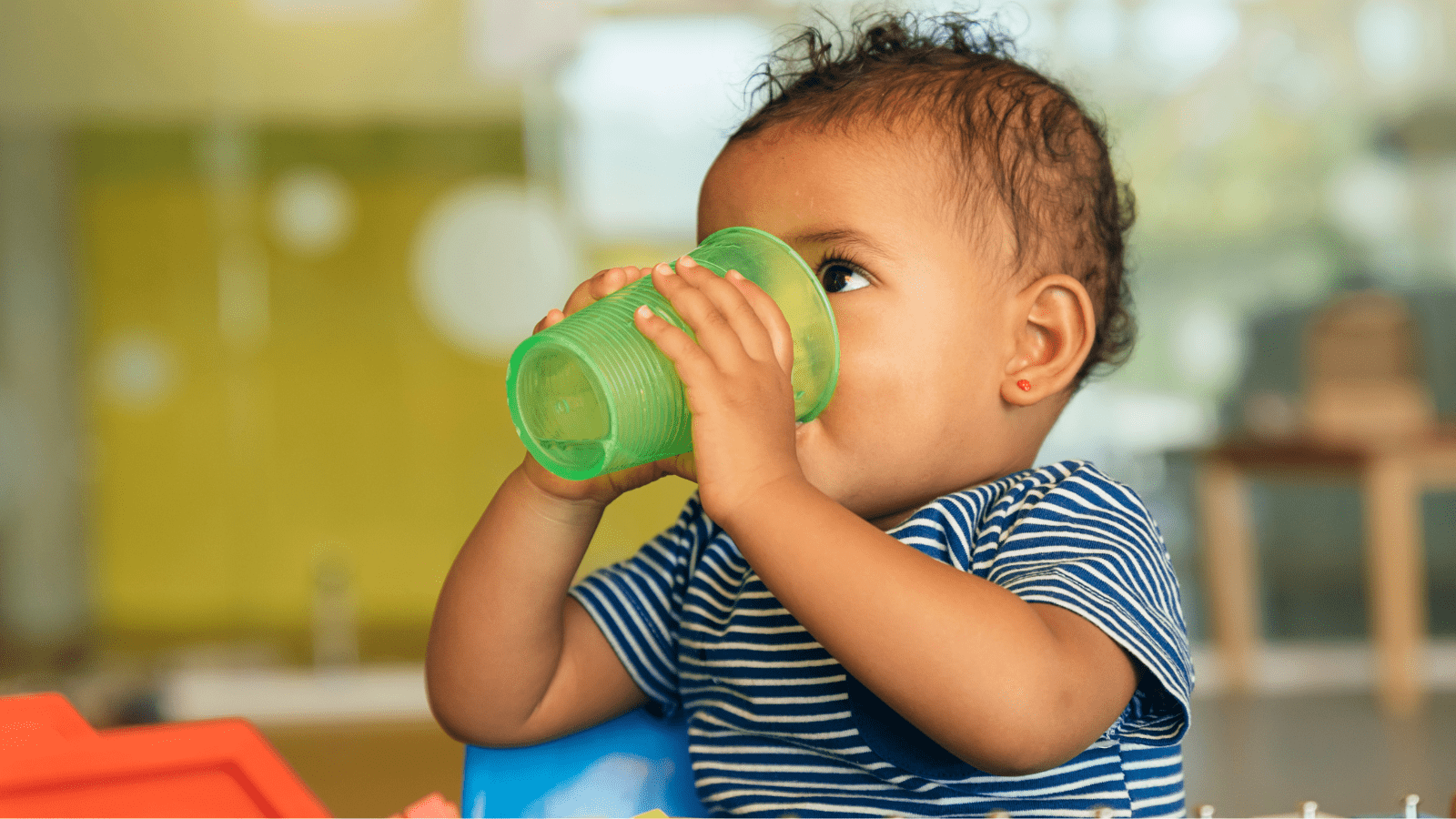The Department of Health (DOH) recommend that infants should be introduced to drinking from a cup from 6 months of age, upon the introduction of solid foods. They also recommend that infants should be drinking all their drinks from a cup from the age of 1 year.
Introducing the cup from the age of 6 months gives infants time to develop their sipping skills ready for the transition from bottle to cup at the age of 1 year.

The risks of extended bottle use
Tooth Decay
Milk, juices and other sugary and acidic drinks given in a bottle, can damage children’s teeth as they can erode tooth enamel. The sucking motion required to draw out the contents of the bottle results in the teeth being bathed in the liquid.When the teeth come into contact with milk, juice and other sugary and acidic drinks, it can cause damage to the hard structure of the tooth, know as the enamel. This is often referred to as Dental Caries.
The World Health Organisation emphasise that “good oral health enables an individual to eat, speak and socialise without active disease, discomfort or embarrassment’. The average child, experiencing decay, has 3 decayed teeth. Worryingly, dental decay is the number one reason for hospital admissions in children aged 5-9 years. Tooth decay is largely preventable!

Poor feeding techniques
It is a natural developmental progression for sipping and swallowing to replace sucking. Drinking from a bottle requires a sucking action whereas drinking from a cup or free flow beaker requires a sipping action. It’s important for children to develop the ability to sip as it will help to build and strengthen the muscles in and around the face which are useful for eating and speaking. Strengthening the muscles in and around the face will help with the biting and chewing of lumpy and finger foods. Infants who are not exposed to using a cup may find it more difficult to manage lumpier food textures.
Food refusal
Bottle use is associated with high liquid intakes. Some children learn that when food is offered they can refuse to eat as the bottle will be a way to fill themselves up. This can worsen fussy eating tendencies. Research shows that children who drink from a bottle will drink more than those drinking from a cup.
Childhood Obesity
There are strong links between long term bottle use and childhood obesity. The bottle is often used as a comfort rather than satisfying hunger, this can lead to excessive intakes of milk and/or other sweet drinks. Every month of extended bottle use is associated with a 3% increase in the odds of being overweight.
Why introduce a cup from 6 months?
- Infants will start to develop the skills needed to drink from a cup
- Practising the sipping technique will help infants to develop and strengthen the muscle in and around their face, useful for eating and speaking
- Using a cup helps to encourage the development of hand eye co-ordination.

Moving from bottle to cup
Moving your child on from the bottle to the cup might seem like a challenge, especially if you have tried and failed before. Below are some proven top tips and strategies for you to try at home.
Remember the key is to be consistent and not give up! Try to ensure the whole family works together as this will make it much easier, that includes parents, grandparents, aunties and uncles.
- Gradually reduce the amount of milk offered in the bottle. Instead give a small amount of milk in a cup with meals or snacks.
- 3, 2, 1… None! Gradually reduce the number of bottles offered. Some parents find it easier to leave the night time bottle until last.
- Night time bottles are the most damaging to teeth. Give the evening bottle on your lap, rather than in bed. If at first your child is determined to take the bottle to bed, fill it with plain water. This should slowly be phased out.
- Try talking to your child about giving up the bottle. It might help picking a special day or occasion to stop using the bottle, e.g. a birthday or when the family are going away on holiday. The day families decide to stop giving a child the bottle, parent’s might like to have a small celebration or ceremony where the bottle is thrown away.
- Try asking your child to throw the bottle in a bin, away from the house or at a local park or High Street. That way, they know it’s not in the should. Once the bottle has been thrown away, allow your child to choose a new cup. The novelty of a new cup may excite them and mean they are more willing to accept drinks.
- Offer your child a reward for swapping to the cup some children may give up their bottle for a new toy.
- Give your child time to get used to the cup and try not to worry if they don’t drink as much milk. Your child can have other food sources of calcium instead such as cheese, yogurt, fromage frais. If you have any concerns about your child’s growth, eating or drinking, please speak to your GP or Health Visitor for further advice and support.

What types of cups and beakers?
When using a bottle or trainer cup, don’t put anything in it other than formula milk, breast milk or water.
There are lots of different children’s cups available for purchase and it can become confusing around which are suitable. Suitable cups should:
- Be free flowing. This means liquids should flow or spill when turned upside down.
- Sometime beakers will have valves in the lid which requires a child to suck the liquid out. Any valves should be removed to ensure the beaker is free flowing.
- Any spouts on beakers should be hard, not soft like that of a bottle teat.
- Cups and free- flow beakers are often cheaper than unsuitable cups.
You can get more information on introducing a cup from the NHS (open in new tab).


excellent information i have learnt that the night time bottle is the most damaging and also to encourage them from 6months.